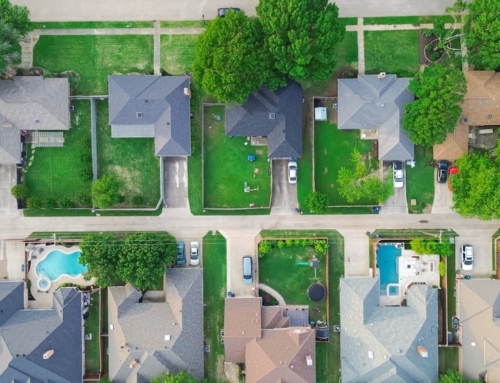It’s a beautiful old house, on a lovely tree-lined street, across from a large park. After the buyers and sellers agreed on a price, the contract went to the attorneys. The buyer’s attorney took a look at the address and asked, “Did you know your house is across the street from a municipal dump?”
The answer was a resounding “No!” The buyers had liked the location specifically because they liked the idea of having a large park nearby. They liked the mini ski hill that the local park district had created. They had no idea the ski hill was a dump that had been active as recently as two years ago.
Everything used to be “caveat emptor” or “buyer beware.” That is, it was incumbent upon home buyers to ask questions about problems and defects in the home. Sellers had no obligation to volunteer information.
The concept of buyer beware started to change in the late 1980s. The California department of real estate created a 6-page disclosure form and required sellers to fill it out, sign it, and present it to home buyers before they closed on the home. Other states started developing their own mandatory disclosure laws. Today, nearly every state requires sellers to disclose hidden defects.
But having laws requiring sellers to disclose hidden defects, such as underground storage tanks, or a perennially leaky roof, doesn’t protect the buyers from purchasing a home with other problems. Most disclosure forms don’t ask the seller whether there is a new 4-lane highway being planned that will cut across the home’s back yard. The law assumes that it is the buyer’s responsibility to find out things that have been publicly discussed and reported on in the local papers.
The problem with disclosure forms is they allow the owner to check off “don’t know” as an answer. You need to know, however, and so you should follow up with some specific questions about the physical condition of the house, the land on which it sits, and the surrounding neighborhood. Here are some key items you should ask about:
1). Are there any current, former, or future sites of municipal dumps, gas stations, dry cleaners, paint stores, factories, commercial or industrial property sites within a 1-mile radius of the home? It’s also important to ask whether or not any of the above were situated near a river or the source of drinking water for the community.
Although the property may not be directly adjacent to a dump site, the fact is, sometimes dumps can leak toxic elements into the soil. While you may feel perfectly safe, the buyer who comes after you may not. Either way, it’s a good idea to find this out ahead of time.
2). Is this area considered to be in a flood plain? When is the last time the area flooded and why? There is a difference between 17″ of rain falling onto parched earth creating a flash flood situation, and being located near a river that spills its banks every couple of years.
Ask specifically if the basement has flooded. If the seller says yes, try to pin down exactly when and why there was a flood. If the seller took steps to fix the problem, ask to see receipts for work completed.
3). Are there any plans for construction (such as roads, school expansion, a condominium building) that might change the look and feel of the neighborhood?
If the village plans to widen your street from a quiet two-lane road into a four-lane highway, it might alter not only your qualify of life but the future value of your home. To be certain, you may want to spend some time in the local municipal planning department and ask a lot of questions.






Leave A Comment